FAMILab
The SJSU Fabrication and Analysis of Macromolecules Instrumentation Laboratory (FAMILab) is a shared instrument facility led by Dr. Madalyn Radlauer and Dr. Philip Dirlam, who are both members of the SJSU Department of Chemistry. This facility houses a range of analytical instruments that are especially relevant to the characterization of macromolecules, such as the organic polymers made in the Radlauer and Dirlam groups. You can read more about these instruments below and can contact either Dr. Radlauer or Dr. Dirlam if you are interested in utilizing this facility.
Gel Permeation Chromatograph (GPC), a type of Size Exclusion Chromatograph (SEC)
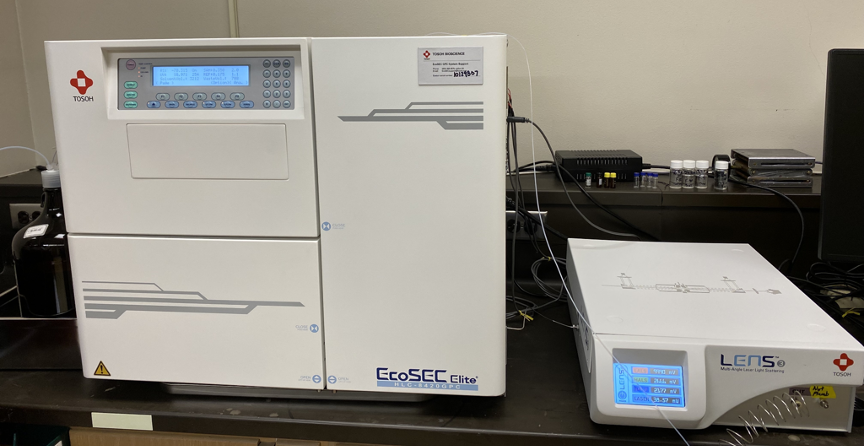
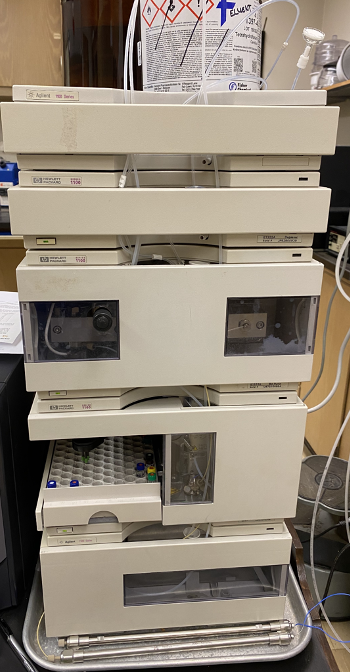
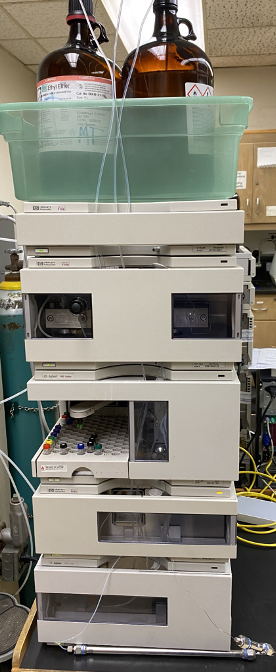
A GPC separates products in order to analyze its parts by size. We have three different GPC instruments, which use different solvents (tetrahydrofuran, dimethylformamide, and chloroform) or detectors (refractive index (RI), UV, and light scattering (LS)).
The EcoSEC instrument was purchased through a 2019 National Science Foundation (NSF) Major Research Instrumentation (MRI) Grant: “MRI: Acquisition of Gel Permeation Chromatograph with Multiple Detectors to Expand Capabilities for Macromolecular Characterization” CHE 1917786.
High Precision Analytical Balance
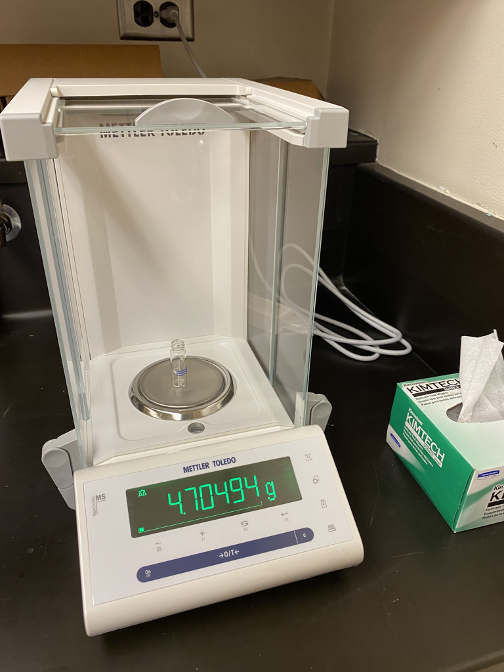
While this is similar to the balances used in your chemistry labs, this high precision analytical balance reads to 5 decimal places, allowing us to be very precise in our measurements. It can also be connected to a computer, so that the results are recorded automatically.
Differential Scanning Calorimeter (DSC)
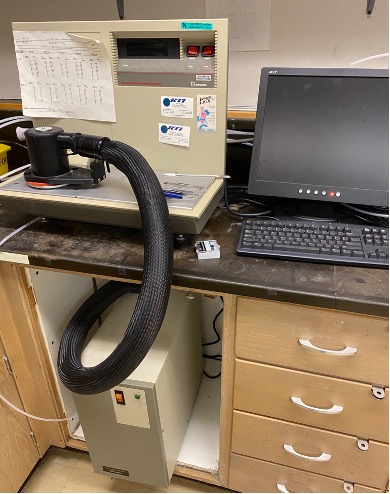
A DSC measures a compound’s thermal stability and can give insight into its conformation. Using a DSC you can determine the temperature of different thermal transitions (e.g. the melting point, the glass transition temperature, etc.).
Thermogravimetric Analyzer (TGA)
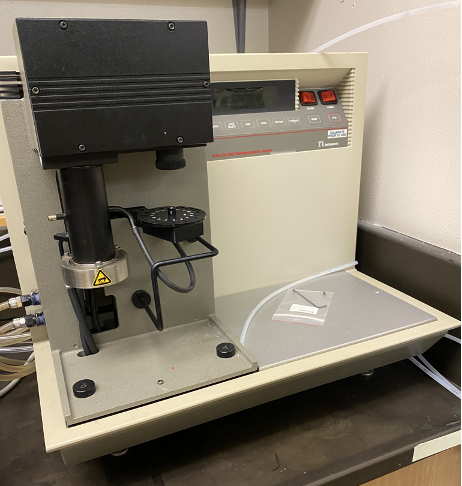
This instrument measures mass over time as temperature changes. It is a good indicator for phase changes and thermal decomposition.
Viscometer
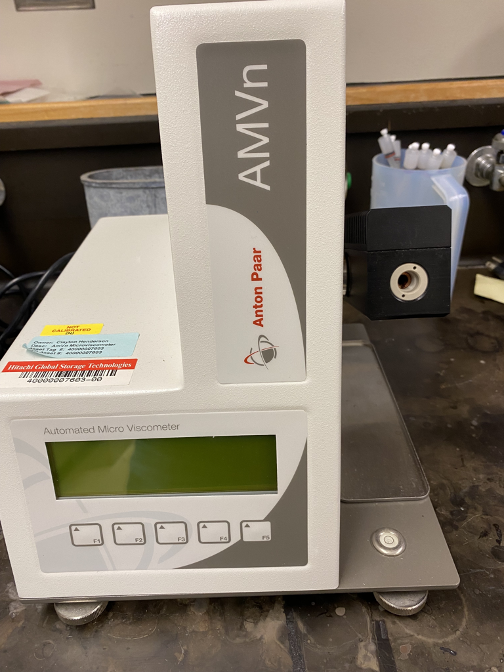
Unsurprisingly, a viscometer measures viscosity - a substance’s resistance to flow. This is done by moving an object through the liquid and measuring how it flows around the object.
Rheometer
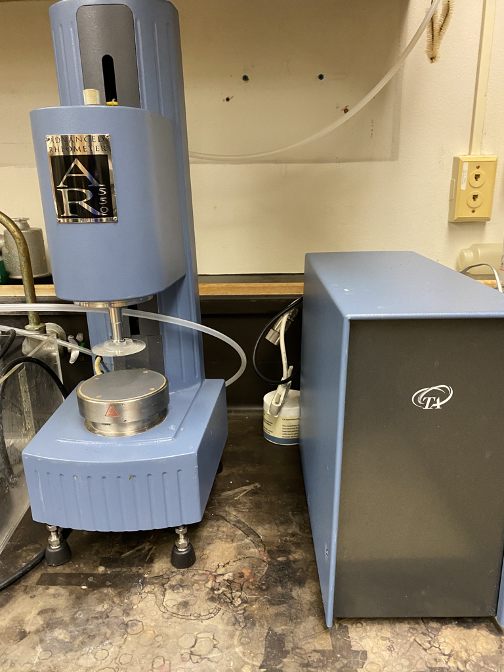
Rheometers are very similar to viscometers as they both deal with measuring resistance to deformation. However, a rheometer specifically measures how a substance flows in response to applied forces.
Contact Angle Analyzer
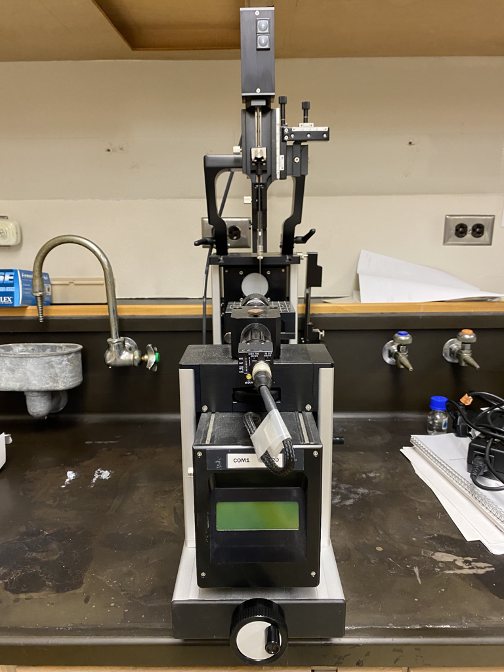
A contact angle analyzer measures surface tension and contact angles of a substance on its own or on a surface. Due to its versatility, it can be used with both solids and liquids!